News
A Savory Journey: Transforming Plums into “Umeboshi” Updated in March 2021
Wakayama grows more ume plums than any other prefecture in Japan. We traveled there to visit umeboshi maker Shōkibai and some ume growers in the town of Minabe for a behind-the-scenes glimpse at how the fruit is made into pickled plums.
Allowing the Fruit to Ripen
The Nankō-ume is the best-known variety of plum used for making umeboshi. It was developed over several generations starting from the second half of the nineteenth century by cultivators in Wakayama Prefecture, which produces 65% of all Japan’s ume plums. The Nankō-ume has thick, soft flesh, a thin skin, and a relatively small stone, making it ideal for umeboshi.
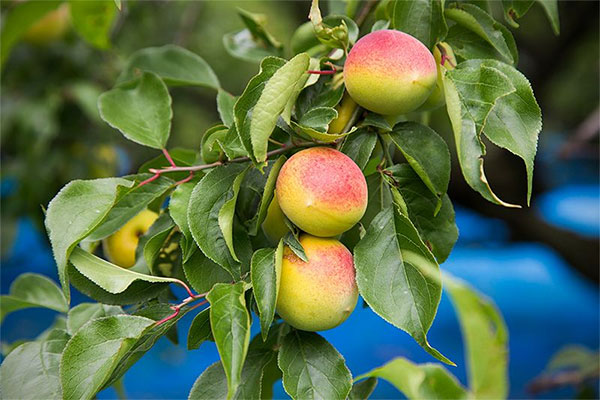
The most important cultivation areas in Wakayama are found around the towns of Minabe and Tanabe in the mountainous Hidaka district. With little flat land available, many of the orchards occupy steep slopes. Although more difficult to tend, these hillside plantations have had the unintended result of preserving the watershed and shoring up the soil, thereby preventing landslides and slope erosion. This natural way of protecting the traditional agricultural landscape was recognized by the UN’s Food and Agriculture Organization as a Globally Important Agricultural Heritage System in 2015.
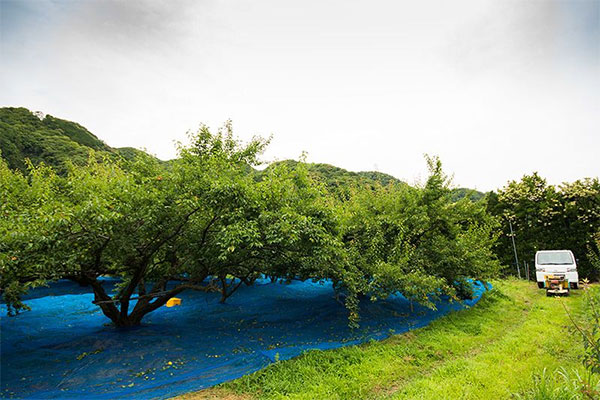
The main harvest season runs from the beginning of June to early-to-mid July. The unripe plums used in umeshu plum liquor and juice are picked by hand. But the fruit destined to become umeboshi is allowed to ripen on the branch until it drops naturally from the trees, normally around mid-June.
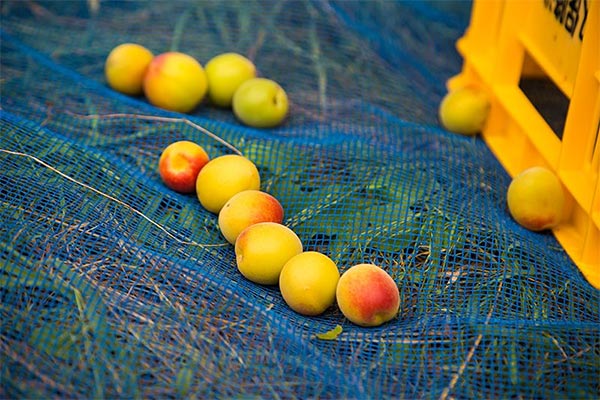
As harvest time approaches, workers cover the ground with nets to prevent bruising to the fruit when it falls. The nets are positioned so that the plums come to rest in clusters after rolling down the sloped surface and can be easily scooped up.
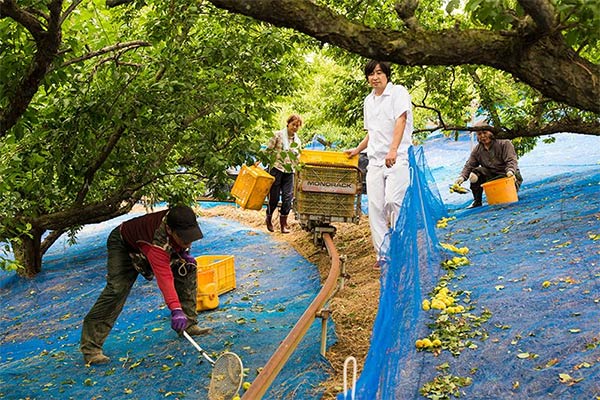
The Creation of Sourness
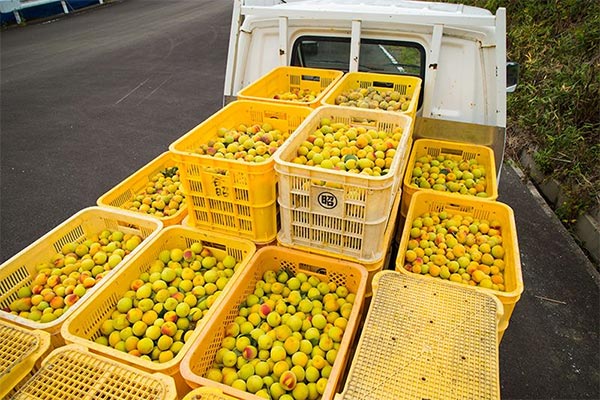
Workers bring the harvested plums to a greenhouse where leaves and other debris are removed and discarded along with any damaged fruit. The remaining plums are then mechanically sorted by size.
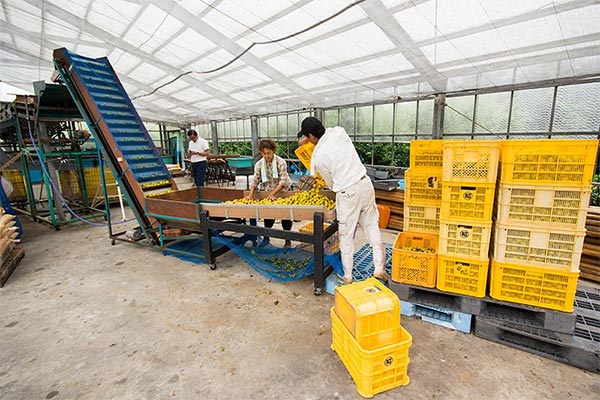
Nankō-ume generally range in size from petit “S” to supersized “4L.” After sorting, workers carefully rinse the plums by hand and place them in tanks according to size for salting.
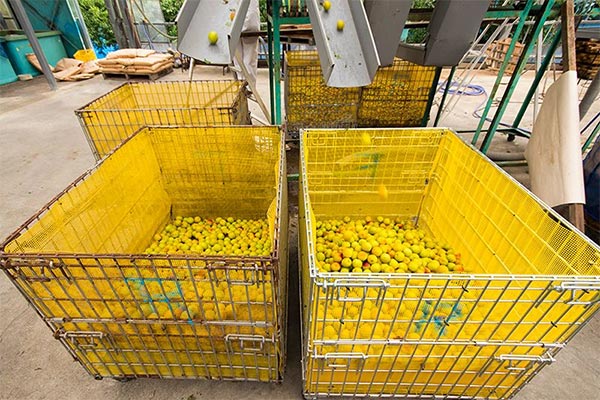
Once in the tanks the plums begin their slow transformation into umeboshi as salt is added, generally 20 kilograms for every 100 kilograms of fruit. Surprisingly, it is the salting process that helps give the finished umeboshi its distinctive sourness by drawing out the juice of the plum, which then become ume vinegar.
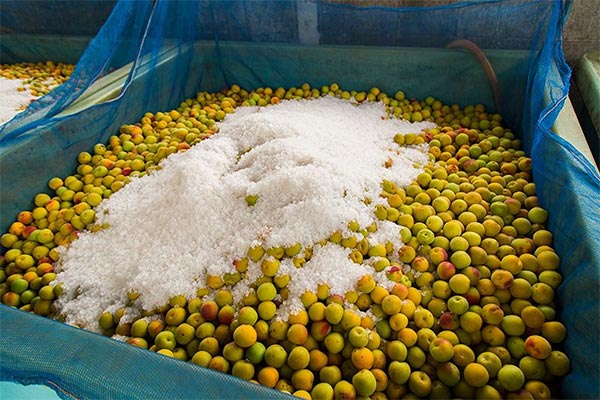
In the next step of the centuries old process, the plums are allowed to steep in the mixture of salt and ume vinegar for at least a month. They are then removed from the tanks and dried in the sun for three or four days. This produces the basic, traditional umeboshi, the shira-boshi pickled plum.
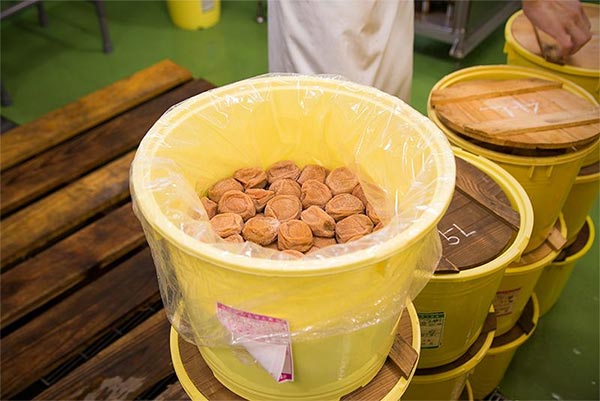
Quality Control by Hand
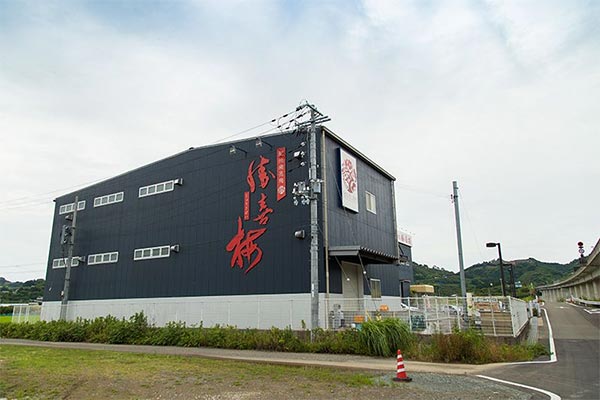
At its plant, umeboshi maker Shōkibai first washes the shira-boshi plums in specially treated water to prevent bacterial growth.
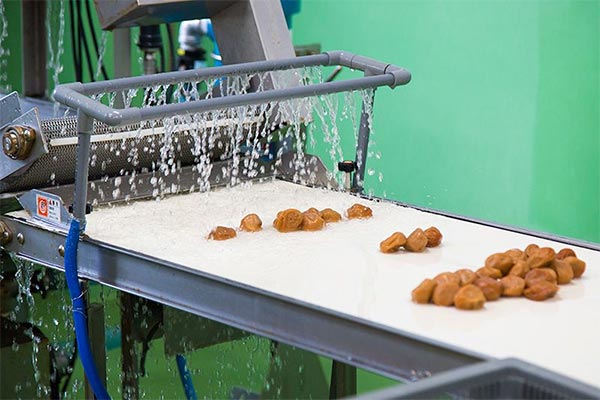
Workers then scrub the umeboshi by hand using lightly acidic electrolyzed water, and give a final check for bruises and other blemishes.
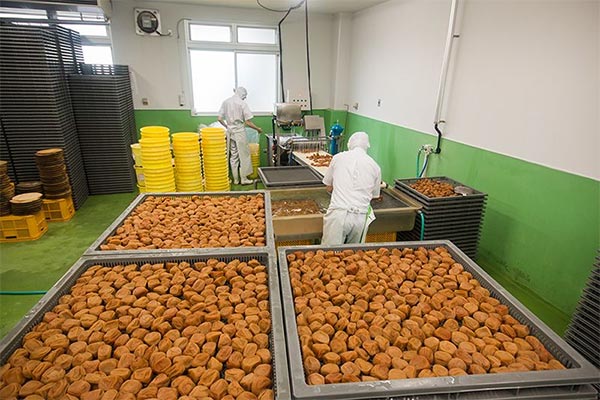
Once they have cleared all checks, the plums are ready to move on to the flavoring stage where honey and other seasonings are added. At many factories, salt reduction and flavoring are carried out separately, but Shōkibai uses a special dual method that produces delicious umeboshi that retain just the right amount of salty sourness.
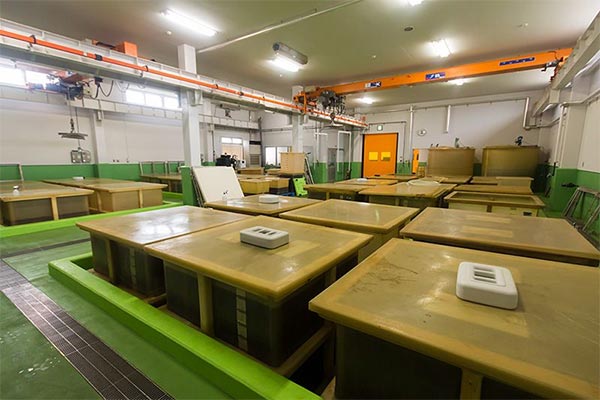
The plums steep in the flavoring tanks for around a month, after which they are removed and dried. After a final inspection for damage and foreign objects, they are then ready to be packaged.
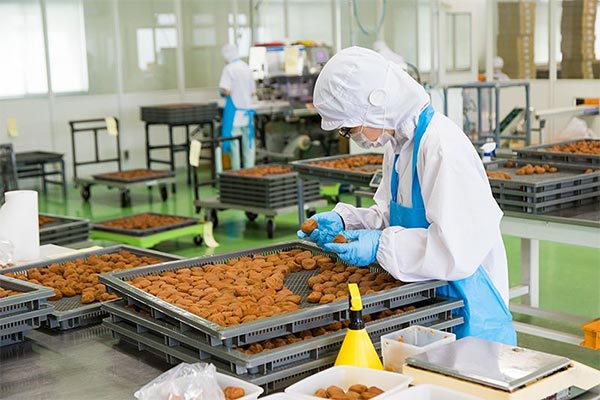
Packaging is also done by hand. Shōkibai does not use any preservatives as they reduce the natural flavor of the umeboshi. Instead, it fills packages with nitrogen, giving even flavored plums with a reduced salt content a shelf-life of two years.
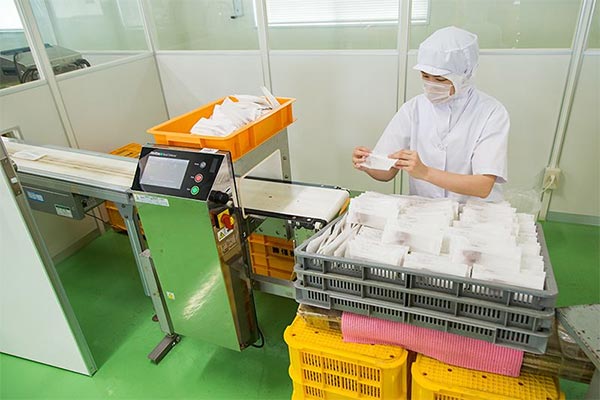
“Nankō-bai plums have thin skins and soft flesh,” says factory manager Hosokawa Akihiro. “They are extremely delicate and it is essential that we do a lot of the work by hand. We don’t cut any corners. We take quality control very seriously, and our plums are subject to exacting checks at every stage of the production process.”

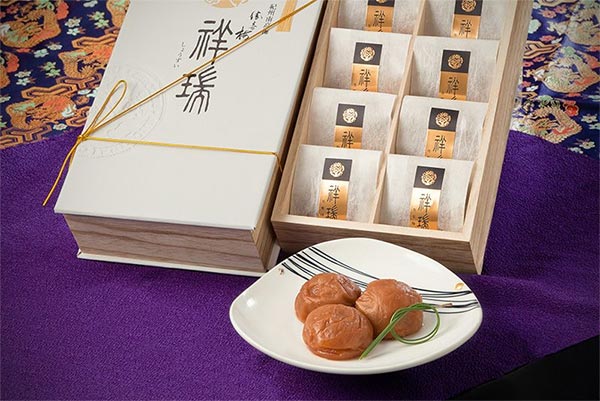
(Originally published in Japanese August 12, 2017. Banner photo: Salt is added to fresh plums to make umeboshi. All photographs by Nippon.com except where otherwise noted.)
Contributed by Nippon.com







